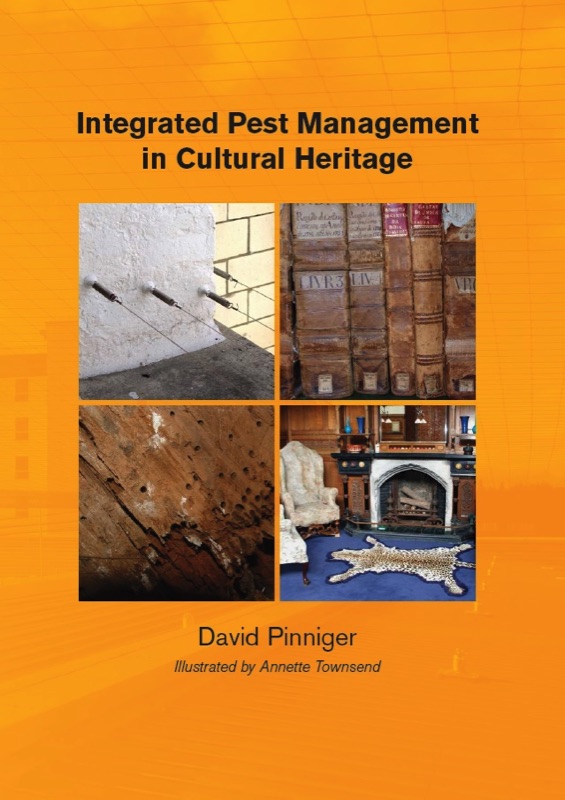Integrated Pest Management in Cultural Heritage is a practical, colour- illustrated, working handbook for the curator, conservator and all persons concerned with the management of collections. It is an essential guide to the recognition of insect, rodent and bird pests with advice on the practical steps required to prevent and control damage to collections.
The latest information on the trapping and detection of pests is presented together with guidelines for pest recording. The author explains the advantages and disadvantages of physical and chemical control measures, including concerns about the use of pesticides and their effects on staff and the environment. In addition, he demonstrates that Integrated Pest Management (IPM) is not only a safer option, but also a more cost-effective solution to the complex problems of pest control.
This book offers comprehensive guidance for the necessary action and treatment of any pest problem likely to be encountered in museums, galleries, libraries, archives and historic houses.
For a look inside click here.
David Pinniger is an entomologist and international pest management consultant.
Please note: Supplementary information on silverfish for pp36 -37 is available as a pdf for download.
Chapter 1 Introduction to Integrated Pest management in Cultural Heritage
What is Integrated Pest management ?
Why have Integrated Pest management in a Museum?
Developing a strategy
Implementing Integrated Pest management
Chapter 2 Insect pests
Why are insects pests?
What are insects?
What are the Pests?
Pests which attack wool, fur, feathers and textiles
Pests which attack herbarium collections and dried food
General detritus feeders, mould feeders and scavengers
Woodborers
Termites
Mites
Chapter 3 Insect detection and monitoring
Where do insects come from?
How do you find insects?
Insect traps
Pheromones
Wooden objects, X-rays, ultrasonics and incubation
Chapter 4 Prevention of insect infestation
Exclusion
Environment
Temperature
Humidity
Hygiene
Storage
Quarantine
Chapter 5 Control of insects
Insects control in buildings
Non-chemical methods
Chemical methods
Control of insects in objects
Physical Control
Atmospheric gases
Radiation
Residual insecticides
Fumigation
Damage to objects by chemical treatments
Safety and pesticide use
Chapter 6 Rodents and Birds
Rodents
Rodents as pests
Surveying for rodents
Preventing rodent infestation
Rodent control
Rodent control strategy
Other vertebrate pests
Bats
Squirrels
Birds
Management of birds
Repellents and deterrents
Chapter 7 Implementing IPM
Developing an IPM Strategy
The future
Index
This book is certainly worthy of a place on the bookshelf...a 156-page practical, working handbook which comes with a very large number of colour photographs and illustrations. It is an essential guide to the recognition of insect pests....For each pest, there is practical advice on the steps required to prevent and control damage...
Pest Magazine - March 2015
The latest information and research regarding trapping, monitoring and treatment for insects, rodents and birds is clearly presented, including information on changes to legislation. A great boon to the new edition is a full index and a detailed contents page, making it very easy to track down specifics...the range of insects covered has been considerably extended....I heartily recommend this as an addition to the IPM bookshelf. The small outlay to purchase the book will be richly rewarded by the help and support that the book will give.
IconNews - July 2015
